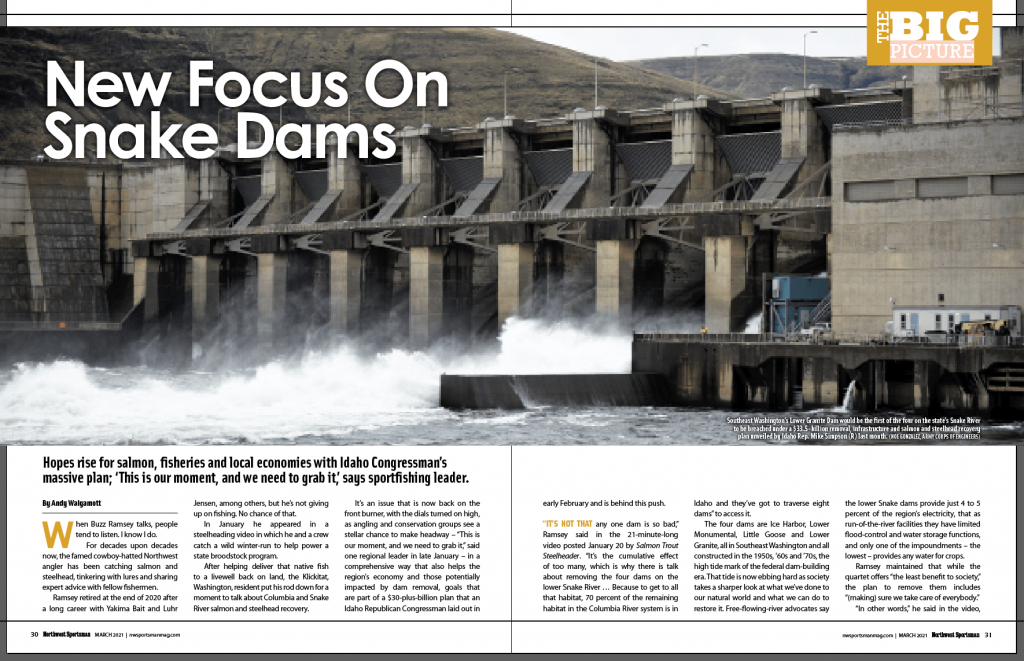
Jarring Report On Snake Basin Spring/Summer Chinook, Steelhead Runs Issued
A big story in the Lewiston Tribune this morning sounds urgent alarms about the Snake River’s wild spring/summer Chinook and steelhead.
Forty-two percent of the former stocks and nearly 20 percent of the latter “have reached the quasi-extinction threshold — an analytical tool used by the federal government to assess the risk of extinction or measure the viability of fish populations. The threshold is tripped when a natural origin population of fish has 50 or fewer spawners return to natal streams for four consecutive years.”

So writes outdoor reporter Eric Barker about the upshot of a recent analysis done by the Nez Perce Tribe on 31 of 32 spring/summer Chinook stocks and 16 steelhead stocks.
“It’s a return, a series of returns, that demonstrates you better do something or you are going to lose your ability to do much of anything,” David Johnson, tribal director Department of Fisheries Resources Management, told Barker.
And what’s more, the story states that Snake River spring Chinook and steelhead have been declining at a rate of 19 and 18 percent over the last 10 years, and that applying that to the coming years puts 77 percent of springers and 44 percent of A- and B-runs in the quasi-extinct category by 2025.
The work comes as the region discusses the sweeping, comprehensive plan of Idaho Congressman Mike Simpson (R) to breach the lower four dams on the Snake River and forecasted “dramatic” impacts to the fish at sea in the future due to climate change.

Barker reports that it has caught the eye of state and federal fish managers – Tucker Jones, ODFW: “If this isn’t a wake-up call, I’m not sure what folks would be looking for”; Bill Tweit, WDFW: “We think their analysis is cause for concern”; Lance Hebdon, IDFG: “Anytime you have a total spawner abundance less than 50 fish, that really puts you in a bad spot”; Chris Jordan, NMFS: “What becomes more and more concerning as time goes on is if these populations don’t rebound from changes in the ocean.”
The tribe’s analysis does show some rebound for wild springer and steelhead from low marks in the years immediately following The Blob, as well as up-and-down cycles over the decades, but also that 2021’s forecasts are still veritable light years away from “desired” levels.
The Nez Perce also want to prioritize increased spill on the Snake and Columbia to aid downstream smolt passage for stocks across the board, better control predator numbers and create new conservation hatcheries in the lower river for upriver-bound stocks, the story states.
Northwest states and tribes have begun removing more sea lions at Bonneville under additional federal authorization granted last year, with four Stellers and three Californias euthanized at the dam so far this month.
The Nez Perce will present their work at meeting of the Northwest Power and Conservation Council next week; their 30-slide PDF has been uploaded ahead of that.
It all makes for some pretty grim but necessary reading on a Friday morning, serving as a strong reminder that “We do need to do something right away and we need to do some major things,” as Johnson told Barker.


